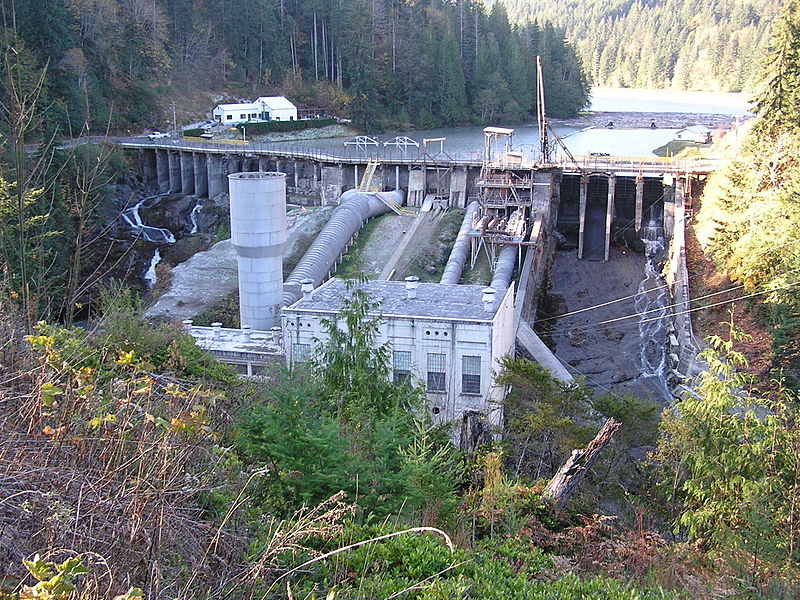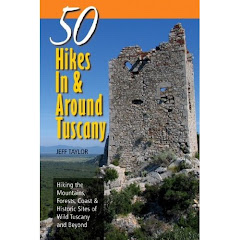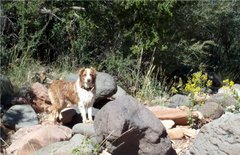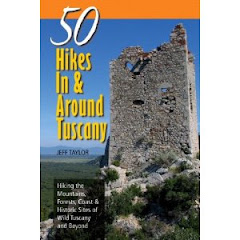Distance: 10.6 miles (13.9 miles with full loop to Sand Point)
Elevation: 30 feet to Sea Level
Difficulty: Moderate
Time of Year: Any Time
| A bald eagle scanning the tide pools for lunch |
With a full moon and the summer solstice approaching, the tides were going to be exceptionally low this past week. Thus, I took off for Lake Ozette on the Olympic Coast to hike up to the mouth of the Ozette River. The trail begins at the Ozette Campground, which can be reached by driving to the end of the Ozette-Hoko Road a few miles west of Clallam Bay of WA-112.
| Lake Ozette The 2nd largest natural lake in Washington |
At the trailhead you can either head to Cape Alava or Sand Point. Stay on the right to Cape Alava, the westernmost point in the contiguous United States. It is 3.1 miles to the coast from the trailhead. The trail will follow a wooden boardwalk of cedar planks across forests of western red cedar and western hemlocks. The area gets more than 100" of rain per year, thus the soils are waterlogged and muddy. Without the boardwalk, this hike would be nearly impossible. It is amazing to think how Native Americans and early pioneers traversed across these woodlands.
| The boardwalk through the cedar/hemlock forest |
Approximately halfway out to Cape Alava, the forest thins and you come into open areas of grassy meadows and bogs of Labrador tea, bog laurel, and carnivorous sundews. These bogs and prairies existed prior to the arrival of homesteaders in the mid-1800's, but were expanded through burning and clearing of trees and brush by these early settlers. It has been hypothesized that Native Americans, such as the Makah people, used fire and other methods to keep these prairies open as forage for deer and to harvest berries and medicinal herbs (Labrador tea, camas roots, cranberries, crowberries, etc). But today, the trees are encroaching on them and closing them back up.
| Ahlstrom's Prairie |
| Carnivorous sundews in Ahlstrom's Prairie |
As you approach the coastline, the forest closes up once again and the forest shifts to one dominated by enormous old-growth Sitka spruce and western hemlock, with an open understory dominated by ferns and salal. Sitka spruce is a sure sign you are near the sea, since it is very salt tolerant.
| An open Sitka spruce forest near the coast |
Upon arriving at Cape Alava, you will see the magnificent Ozette Island about 1/2 mile offshore. Listen for the sounds of dozens of sea lions on the rocks offshore. Some amazing tidepools are available right along this stretch. Turn right and head north for the next 2.3 miles of magnificent wilderness coastline to the Ozette River across sandy beaches and rocky tidepools.
| The rocky coastline near Cape Alava |
| Sea stacks at Cape Alava |
Just up from Cape Alava, you will see a green building that is the summer staffed Ozette Ranger Station. Here, backcountry rangers patrol these very popular beaches making sure campers have their backcountry permits, bear cans, and to provide assistance for hikers in distress. Just after that you will come across an open grassy area which was the site of the ancient Ozette village of the Makah. Occupied for nearly 2,000 years, this village was buried by a landslide about 500 years ago. This allowed for the best preserved pre-European contact Indian village in the United States. It was discovered in the 1970's and excavated by archeologists. The artifacts now sit at the outstanding Makah Museum in Neah Bay. The site has been reburied and all that remains are the grassy slope visible below.
| The Ozette site - an ancient Makah village buried by a mudslide 500 years ago |
As you head north, you will cross a combination of sandy beaches and rocky headlands. One headland can not be rounded at high tide and even at low tide can be a challenge of slippery kelp covered rocks. But, there is a rope that climbs straight up a steep route over the headland (about a 30 foot climb) and I recommend you use it instead.
| Sometimes something as simple as a spring flowing through sand to the sea can be "art" |
Along the way, you can look north up to seastacks and headlands of the the Point of Arches and to Cape Flattery beyond. You can not hike up there without wading across the Ozette River, so the river is a good place to turn around. At low tide, the river is about knee deep, but it is impossible to cross during high tide.
| A beautiful alcove in the headland |
As you can see in this image below of the Ozette River, it isn't much of a river. But, at high tide, the seawater flows up the channel and backs up the river forming a swath of water over 10-12 feet deep. So, it is best to visit at low tide, even if you have no plans to cross it.
| The Mouth of the Ozette River |
If you do attempt to cross it, be prepared to take off the boots, strip off your pants, and use a hiking stick to keep your balance in the swift flow across loose sand and scattered rocks. But, once you have crossed it, nothing is stopping you from reaching Point of Arches 5 miles to the north.
| A hike crossing the Ozette River |
Upon your return, you can either go back the way you came to Lake Ozette (which makes for a 10.6 mile trip) or continue 3.1 miles south along the coast to Sand Point. Since I was there last, the beaches have eroded away, making it a tough rocky slippery stretch. If you do the whole loop, then it approaches 14 miles. It can be done, but only at low tide. I discussed this section in a previous hike description here:
| A brave and ornery crab holding his ground |















